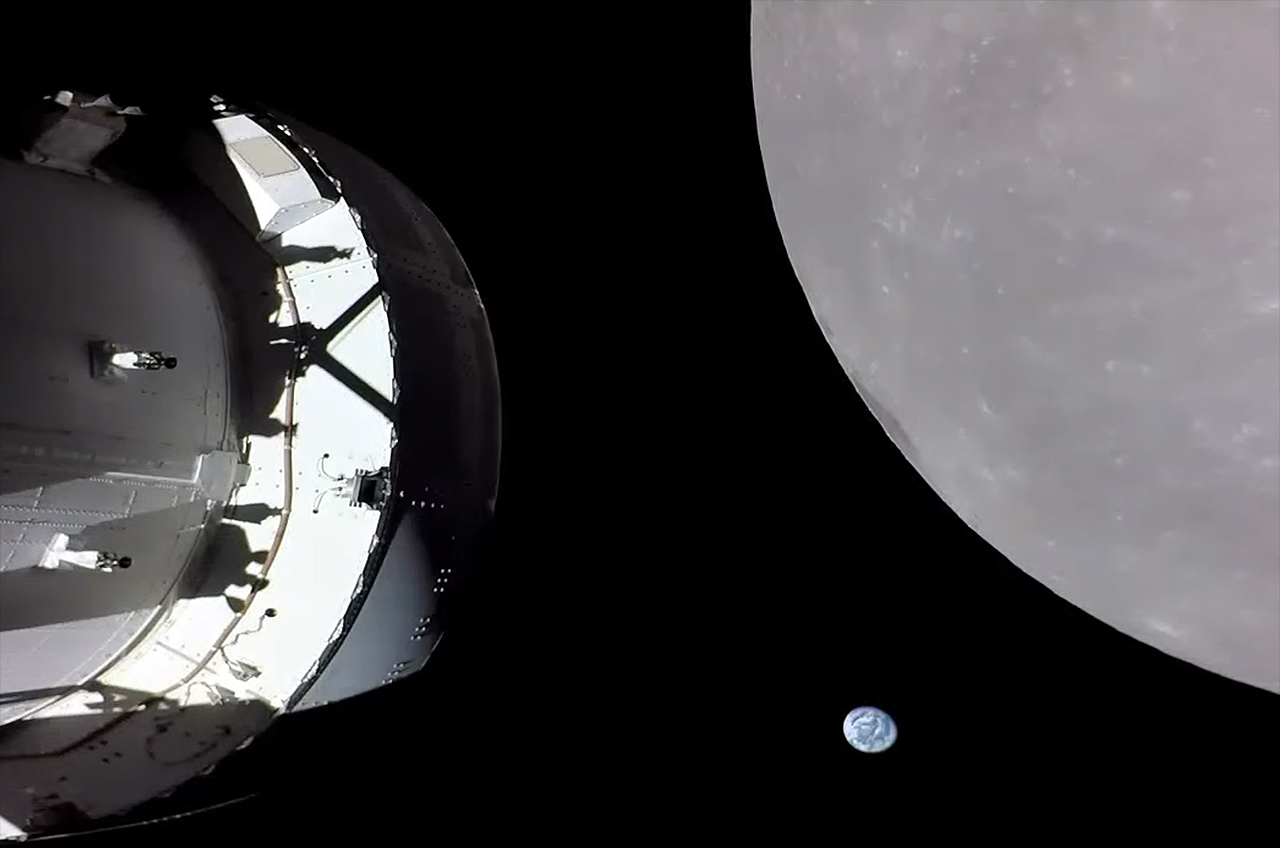Artemis 1's Orion spacecraft sees Earth setting behind moon (video)
It's a new 'pale blue dot' image from deep space.
A mesmerizing new video shows Earth setting behind our moon as a spacecraft flies in the vicinity.
Artemis 1, the first flight of NASA's Artemis program, launched early Wednesday morning (Nov. 16). All milestones after launch atop the huge Space Launch System rocket have been checked off so far, including a crucial engine burn of the uncrewed Orion spacecraft at the moon on Monday (Nov. 21).
NASA carried the engine burn live and also livestreamed footage of Orion flying near the moon when a signal from the capsule was available.
"You are seeing the Earth; you are seeing home. You are seeing yourself in that image right there as Orion is 232,000 miles [373,000 kilometers] away from planet Earth," NASA spokesperson Sandra Jones said during live coverage of the Orion lunar flyby Monday (Nov. 21) on NASA Television.
In photos: Amazing views of NASA's Artemis 1 moon rocket debut
Orion's high-definition view of Earth on Monday was far from the first time we've glimpsed our planet from so far afield.
During the broadcast, Jones evoked the famed Christmas Eve broadcast from Apollo 8 on Dec. 24, 1968, when three astronauts beamed home live black-and-white footage of the moon, during the first orbital lunar journey by humans. Apollo 8 crewmember Bill Anders also captured a still color image of "Earthrise" above the lunar surface that remains iconic to this day.
Get the Space.com Newsletter
Breaking space news, the latest updates on rocket launches, skywatching events and more!
Jones also referenced the "pale blue dot" image taken by NASA's Voyager 1 probe in 1990 from above the plane of the solar system and beyond the orbit of Neptune. The moniker came from scientist and science popularizer Carl Sagan.
In recent years, Earth-observing satellites like Suomi NPP and GOES-16 have provided "blue marble" photos from high above our planet. Periodic flybys by spacecraft such as BepiColombo in 2020 also have shown our Earth's full disc.
In photos: The top 10 views of Earth from space

After Orion's Monday flyby, NASA flight director Zeb Scoville said the view of Earth setting behind the moon "is a game-changer" as NASA prepares to send humans back to lunar realms with the Artemis 2 mission, currently slated to fly no earlier than 2024.
"Going to work at NASA, when I got here we were flying shuttle," Scoville recalled on NASA Television.
"We were building a space station and flying it. That is an incredible vehicle, but on the horizon was always how humanity was going to back to the moon ... [We're] preparing to bring humans back there within a few years. This is a game-changer."
Elizabeth Howell is the co-author of "Why Am I Taller?" (ECW Press, 2022; with Canadian astronaut Dave Williams), a book about space medicine. Follow her on Twitter @howellspace. Follow us on Twitter @Spacedotcom or Facebook.
Join our Space Forums to keep talking space on the latest missions, night sky and more! And if you have a news tip, correction or comment, let us know at: community@space.com.

Elizabeth Howell (she/her), Ph.D., was a staff writer in the spaceflight channel between 2022 and 2024 specializing in Canadian space news. She was contributing writer for Space.com for 10 years from 2012 to 2024. Elizabeth's reporting includes multiple exclusives with the White House, leading world coverage about a lost-and-found space tomato on the International Space Station, witnessing five human spaceflight launches on two continents, flying parabolic, working inside a spacesuit, and participating in a simulated Mars mission. Her latest book, "Why Am I Taller?" (ECW Press, 2022) is co-written with astronaut Dave Williams.









